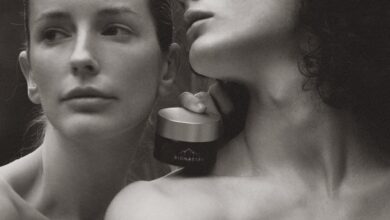With so many different types of sheets available such as cotton, silk, and Bamboo Sheets, deciding which one is ideal for you can be more difficult than it appears. Some buyers may be persuaded to buy sheets based on how they feel in their hands, but this does not always reflect the most essential performance criteria.
The category in which a sheet set is placed can be just as important as the item itself. These classifications have a significant impact on how the sheets feel and how well they keep up over time.
Bamboo and cotton sheets are two readily available types. Cotton linens are a classic since they are breathable and long-lasting. Egyptian cotton is particularly sought after. Bamboo sheets are still relatively new on the market, but their durability and lightness are gaining appeal. Bamboo sheets can also be considered sustainable and eco-friendly, depending on the processing, because bamboo can grow quickly with minimal resources.
We’ll compare bamboo vs. cotton sheets side by side to help you evaluate their performance, as well as their possible benefits and cons.
Sheets made of bamboo
Bamboo sheets are often made of rayon, lyocell, or modal fabric made from bamboo fibers. Softness, breathability, and durability are frequently comparable to cotton in these sheets.
Bamboo sheets are generally seen as environmentally friendly because the bamboo plant grows swiftly and requires little in the way of pesticides, fertilizers, or irrigation. While the raw material is environmentally friendly, the viscose process uses chemicals to dissolve bamboo pulp so that cellulose can be extracted and spun into fibers. The viscose method is used in some of the most common bamboo fabrics, such as rayon, lyocell, and modal.
While bamboo linen, also known as bast bamboo fiber, is more difficult to come by, it uses a chemical-free mechanical method that may appeal to eco-conscious shoppers. The resulting cloth, on the other hand, is coarse and prone to wrinkling.
Bamboo Sheets Come in a Variety of Styles
As previously mentioned, the materials used in bamboo sheets differ, but that isn’t the only difference between them. Sheets can also have a variety of weaves, which impacts how they feel and perform. The following are the three most prevalent weaves seen in bamboo sheets:
Percale: This weave has one thread over, one thread under pattern, which generates a crisp, lightweight fabric with a matte finish. Their permeability makes percale sheets popular with hot sleepers, but they’re also prone to wrinkling.
One thread under and three to four threads over is the sateen weave. Sateen is known for its silky texture and shiny luster. It resists creases naturally, giving it a smooth appearance that drapes elegantly over the bed. Sateen sheets are more susceptible to heat retention, pilling, and snagging.
Twill is characterized by diagonal parallel ribs. This is the denim weave, so it might look familiar. Twill sheets may not be the smoothest option because of the ribbing, but they are usually highly durable.
Sheets made of cotton
The most prevalent fabric for bedding is cotton. Natural fibers from the cotton plant are used in this classic alternative. The sheets that result are often soft, long-lasting, and simple to care for.
One or more varieties of cotton can be found in sheets. Egyptian cotton has extra-long staples, making the finished product extraordinarily soft and durable, but at a higher cost. Pima cotton features extra-long staples and many of the same advantages as Egyptian cotton, but without the high cost.
These are the difference between cotton and bamboo sheets. Now that you are well aware of the difference, do your research carefully to make sure which one you want to go with.




